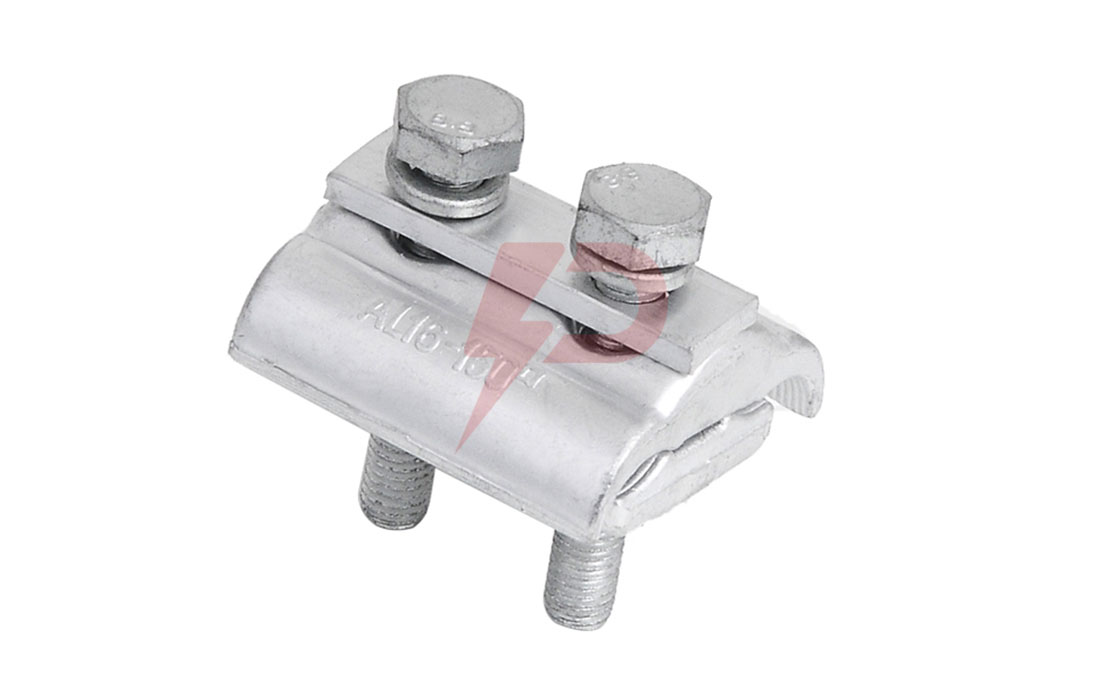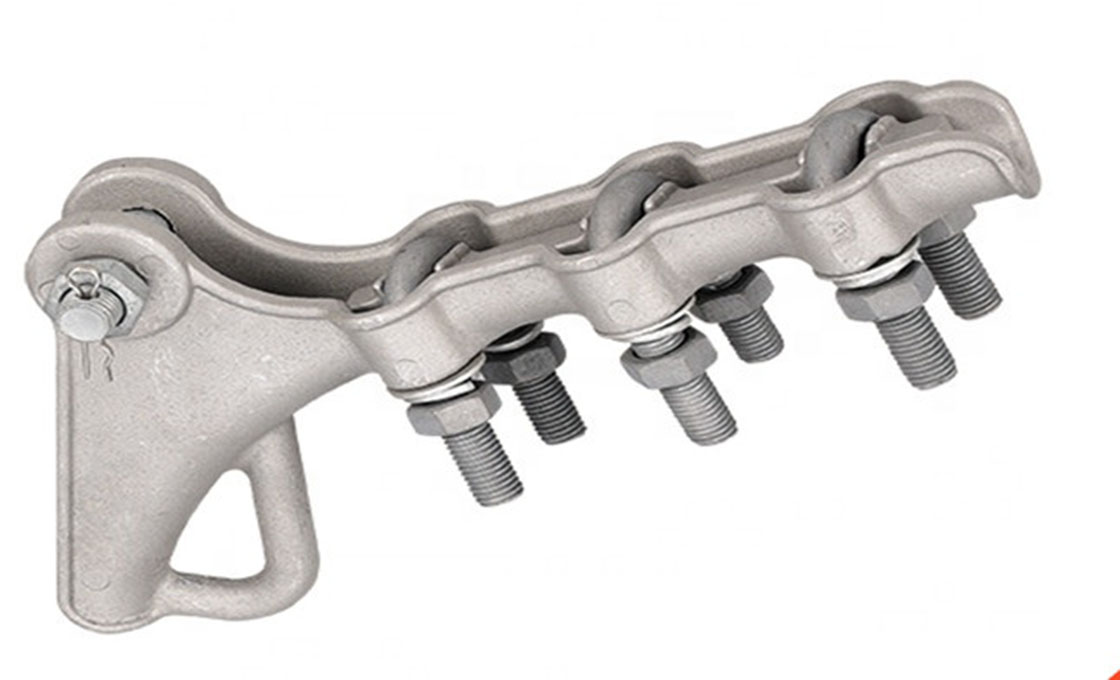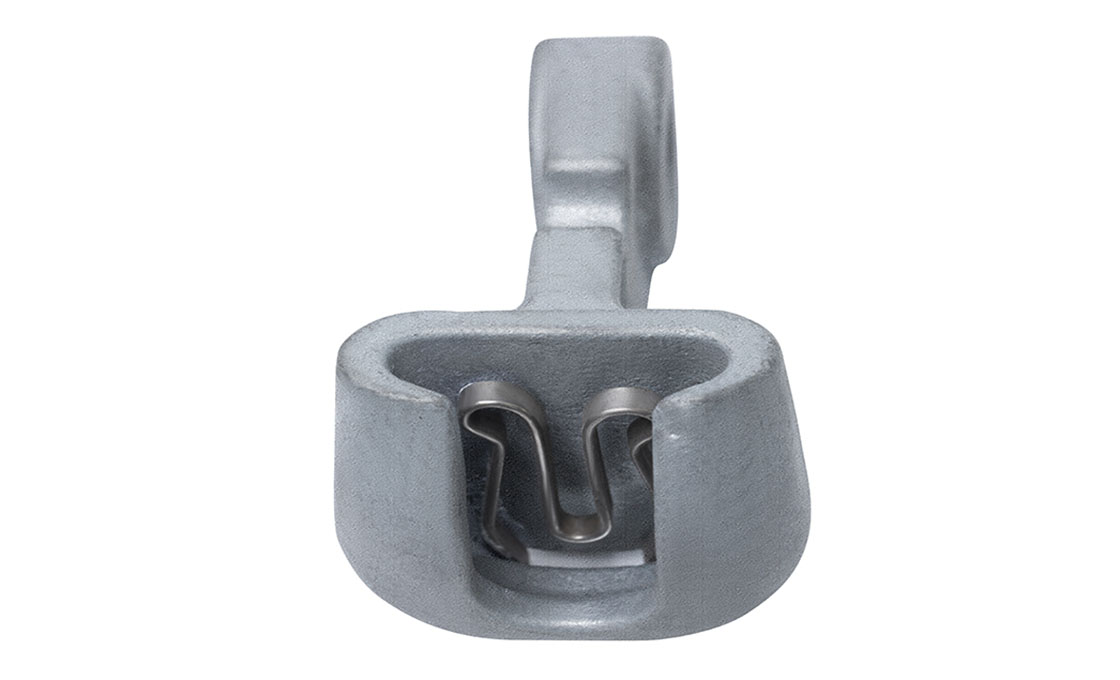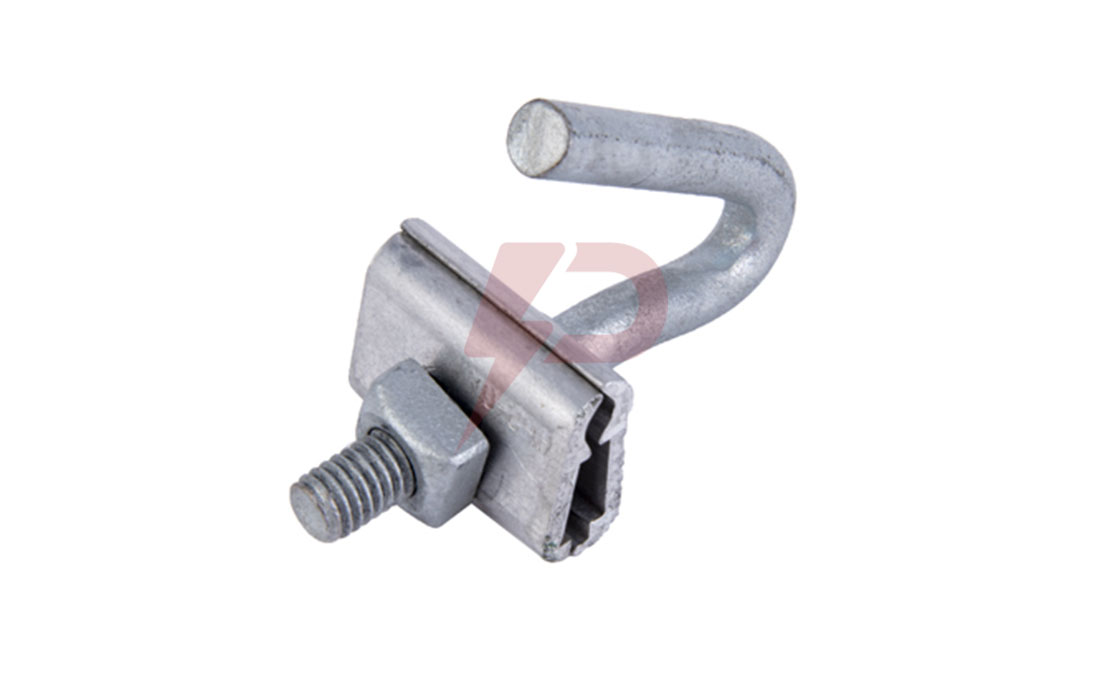Parafoudre de distribution
Les parafoudres de distribution sont des dispositifs de protection essentiels qui protègent les systèmes de distribution électrique contre les surtensions passagères et les coups de foudre.. Ces appareils utilisent des varistances à oxyde métallique (MOV) technologie, comportant des blocs d'oxyde de zinc comme composant principal, qui deviennent instantanément conducteurs lors d'événements de surtension pour détourner l'excès de courant vers la terre. Les parafoudres de distribution fonctionnent en limitant les surtensions à des niveaux gérables, protéger les équipements vitaux comme les transformateurs, appareillage de commutation, et lignes de distribution fonctionnant à des tensions allant jusqu'à 72.5 kV.
Les parafoudres de distribution se répartissent en trois classifications principales: Service normal (ND), Robuste (HD), et colonne montante robuste. Le type Normal Duty sert de protection de base pour les zones avec une activité de foudre minimale., tandis que les variantes Heavy Duty offrent une protection améliorée pour les régions fortement sujettes à la foudre.. Le type de colonne montante robuste, doté de disques MOV de plus grand diamètre, offre le plus haut niveau de protection et est généralement installé pour protéger les câbles et équipements de distribution souterrains. Les parafoudres de distribution modernes utilisent des boîtiers en porcelaine ou en polymère, le caoutchouc de silicone étant le matériau prédominant du boîtier en raison de sa résistance supérieure aux UV et de ses propriétés hydrophobes.
Caractéristiques des parafoudres de distribution:
• Technologie MOV avancée pour une réponse rapide aux surtensions
• Plusieurs niveaux de protection pour divers besoins d'applications
• Fonctionnalité de sectionneur intégrée pour une indication visible de panne
• Options de boîtier en polymère résistant aux intempéries
• Haute résistance mécanique et durabilité
• Conformité complète IEEE C62.11
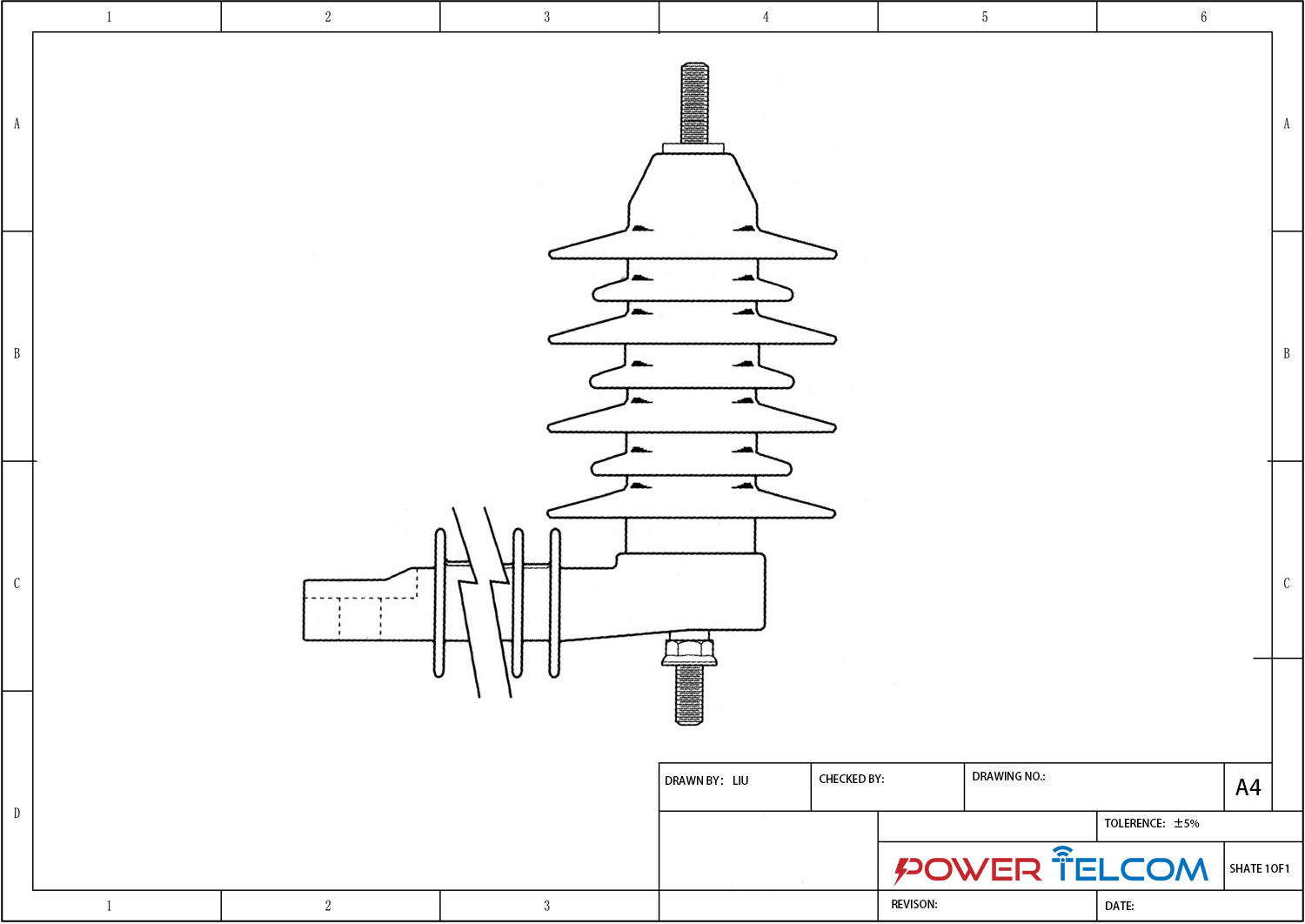
Dessin du parafoudre de distribution
| Taper | Tension nominale (kV) | MCOV (kV) | Impulsion de courant raide(kV) | 8/20nous Impulsion de foudre(kV) | Taux de transfert de charges répétitif, Qrs (C) | 4/1 Ous Impulsion de courant élevée(kA) | 2ms tenue aux chocs de courant rectangulaire(UN) | Classement des parafoudres | |
| DA5W-3 | 3kV5kA | 3 | 2.4KV | 11 | 8.3 | 0.4 | 100 | 400 | DM |
| DA5W-6 | 6kV5kA | 6 | 4.8KV | 20 | 16.6 | 0.4 | 100 | 400 | DM |
| DA5W-9 | 9kV5kA | 9 | 7.2KV | 29.5 | 24.9 | 0.4 | 100 | 400 | DM |
| DA5W-12 | 12kV 5kA | 12 | 9.6KV | 39 | 33.2 | 0.4 | 100 | 400 | DM |
| DA5W-15 | 15kV 5kA | 15 | 12KV | 48.5 | 41.5 | 0.4 | 100 | 400 | DM |
| DA5W-18 | 18kV 5kA | 18 | 14.4KV | 58 | 49.8 | 0.4 | 100 | 400 | DM |
| DA5W-21 | 21kV 5kA | 21 | 16.8KV | 67.5 | 58.1 | 0.4 | 100 | 400 | DM |
| DA5W-24 | 24kV 5kA | 24 | 19.2KV | 77 | 66.4 | 0.4 | 100 | 400 | DM |
| DA5W-27 | 27kV 5kA | 27 | 21.6KV | 86.5 | 74.7 | 0.4 | 100 | 400 | DM |
| DA5W-30 | 30kV 5kA | 30 | 24KV | 96 | 83 | 0.4 | 100 | 400 | DM |
| DA5W-33 | 33kV 5kA | 33 | 26.4KV | 105.5 | 91.3 | 0.4 | 100 | 400 | DM |
| DA5W-36 | 36kV 5kA | 36 | 28.8KV | 115 | 99.6 | 0.4 | 100 | 400 | DM |
| DA10W-3 | 3kV lOka | 3 | 2.4KV | 11 | 8.3 | 0.4 | 100 | 400 | DH |
| DA10W-6 | 6kV lOka | 6 | 4.8KV | 20 | 16.6 | 0.4 | 100 | 400 | DH |
| DA10W-9 | 9kV lOka | 9 | 7.2KV | 29.5 | 24.9 | 0.4 | 100 | 400 | DH |
| DA10W-12 | 12kV lOka | 12 | 9.6KV | 39 | 33.2 | 0.4 | 100 | 400 | DH |
| DA10W-15 | 15kV lOka | 15 | 12KV | 48.5 | 41.5 | 0.4 | 100 | 400 | DH |
| DA10W-18 | 18kV lOka | 18 | 14.4KV | 58 | 49.8 | 0.4 | 100 | 400 | DH |
| DA10W-21 | 21kV lOka | 21 | 16.8KV | 67.5 | 58.1 | 0.4 | 100 | 400 | DH |
| DA10W-24 | 24kV lOka | 24 | 19.2KV | 77 | 66.4 | 0.4 | 100 | 400 | DH |
| DA10W-27 | 27kV lOka | 27 | 21.6KV | 86.5 | 74.7 | 0.4 | 100 | 400 | DH |
| DA10W-30 | 3OkV lOkA | 30 | 24KV | 96 | 83 | 0.4 | 100 | 400 | DH |
| DA10W-33 | 33kV lOka | 33 | 26.4KV | 105.5 | 91.3 | 0.4 | 100 | 400 | DH |
| DA10W-36 | 36kV lOka | 36 | 28.8KV | 115 | 99.6 | 0.4 | 100 | 400 | DH |
Foire aux questions (FAQ)
Comment les parafoudres de distribution améliorent-ils la fiabilité du réseau?
Les parafoudres de distribution améliorent la fiabilité du réseau en détournant l'énergie excédentaire vers la terre, prévenir les pannes, minimiser les perturbations pour les clients, et maintenir des profils de tension stables. Ils peuvent également être intégrés aux systèmes de réseaux intelligents pour une surveillance en temps réel des performances et de l'état du système..
A quoi sert un parafoudre de distribution?
Un parafoudre de distribution protège l'infrastructure électrique contre les augmentations soudaines de tension ou “surtensions” causé par des coups de foudre ou d'autres événements transitoires. Il limite la tension du système de distribution d'énergie et détourne l'excès de courant vers la terre., prévenir les dommages aux équipements sensibles.
Comment fonctionnent les blocs ZnO MOV dans les parafoudres de distribution?
Oxyde de zinc MOV (Varistance à oxyde métallique) les blocs dans les parafoudres de distribution fournissent un chemin à faible résistance pour le courant. Ils conduisent des niveaux élevés d’électricité, absorber la tension et dissiper l’excès d’énergie tout en limitant les dommages au système de distribution.
Quels facteurs doivent être pris en compte lors de l'évaluation d'un parafoudre de distribution?
Lors de l'évaluation des parafoudres de distribution, considérez la cote de surtension (exprimé en tension nominale), qui indique ses conditions de fonctionnement et sa capacité de détournement d’énergie. Aussi, prendre en compte la taille, matériaux de construction, et dimensions du parafoudre, car ceux-ci affectent les performances globales.
Où faut-il utiliser les parafoudres de distribution?
Des parafoudres de distribution doivent être utilisés dans les réseaux de distribution pour protéger les lignes, transformateurs, et autres équipements électriques contre la foudre ou les pannes de courant. Cela permet de réduire les temps d'arrêt, frais de réparation, et perte de revenus due aux pannes.
Quels sont les avantages des boîtiers polymères dans les parafoudres de distribution?
Boîtiers polymères, en particulier ceux en caoutchouc de silicone, offrir des performances supérieures en matière de pollution, sécurité améliorée, et une meilleure étanchéité contre la pénétration de l'humidité par rapport aux boîtiers en porcelaine traditionnels. Ils fonctionnent également mieux dans des conditions de forte contamination grâce à leurs propriétés hydrophobes à long terme..
Quel est le rôle d'un sectionneur dans les parafoudres de distribution?
La plupart des parafoudres de distribution sont équipés d'un dispositif sectionneur qui sépare le fil de terre en cas de défaillance du parafoudre.. Cela garantit qu'une défaillance du parafoudre ne provoque pas de panne permanente et fournit une indication visible au personnel de maintenance pour remplacer le parafoudre..










